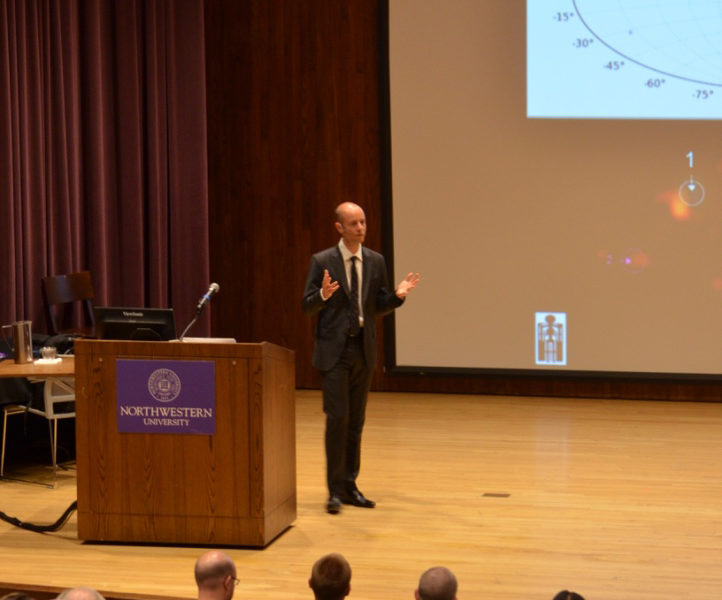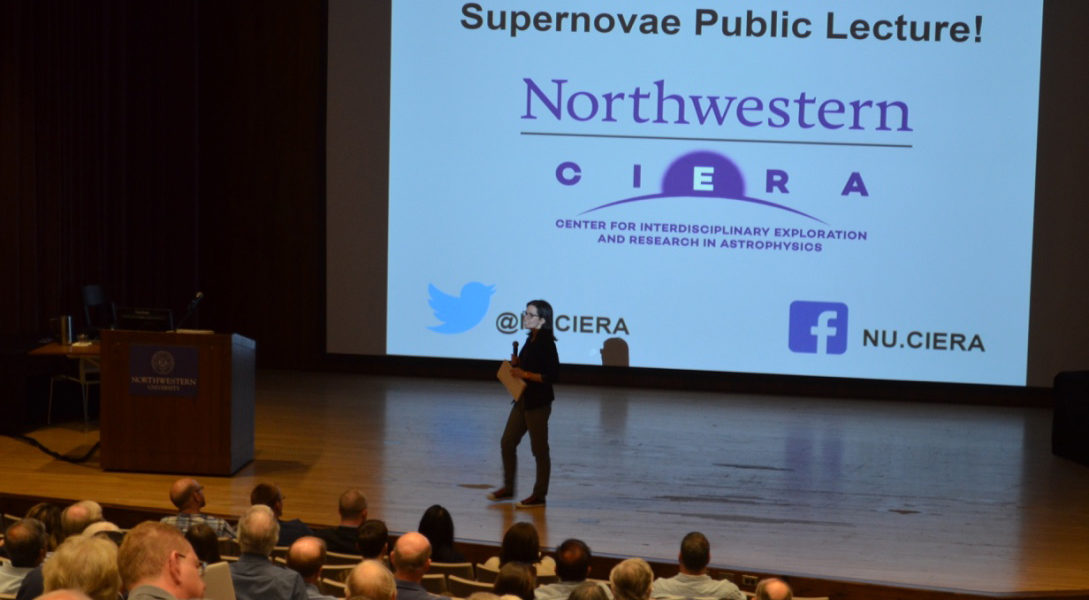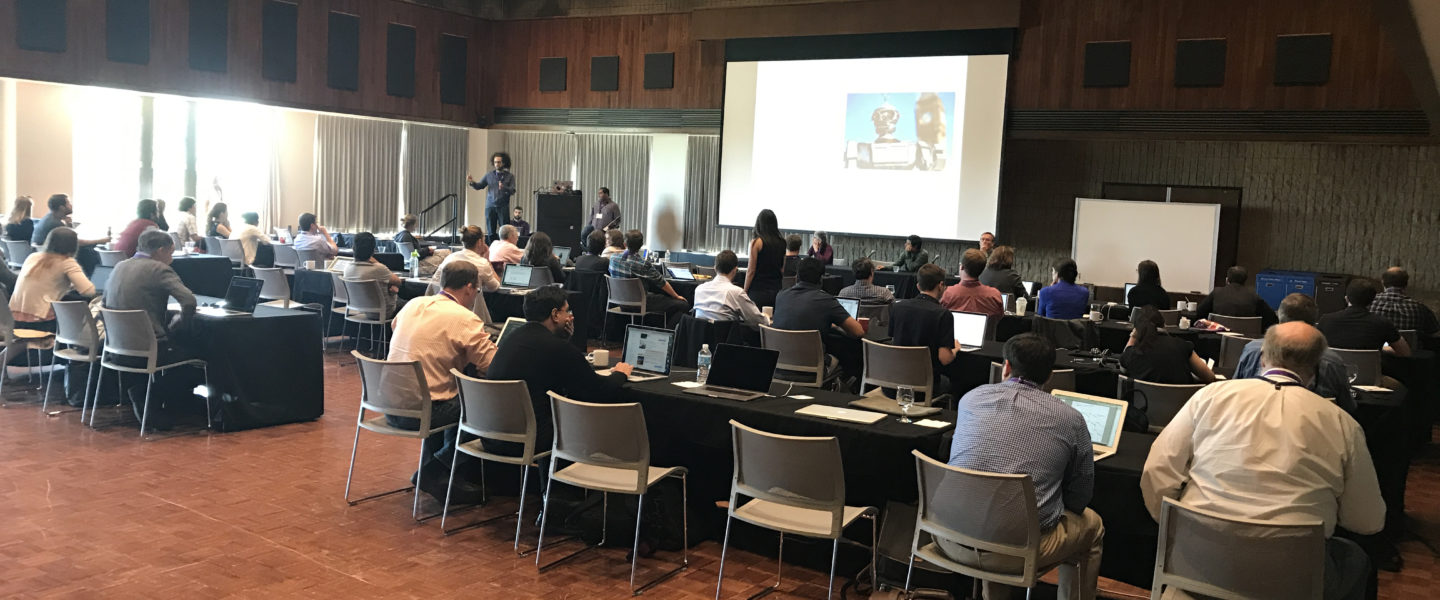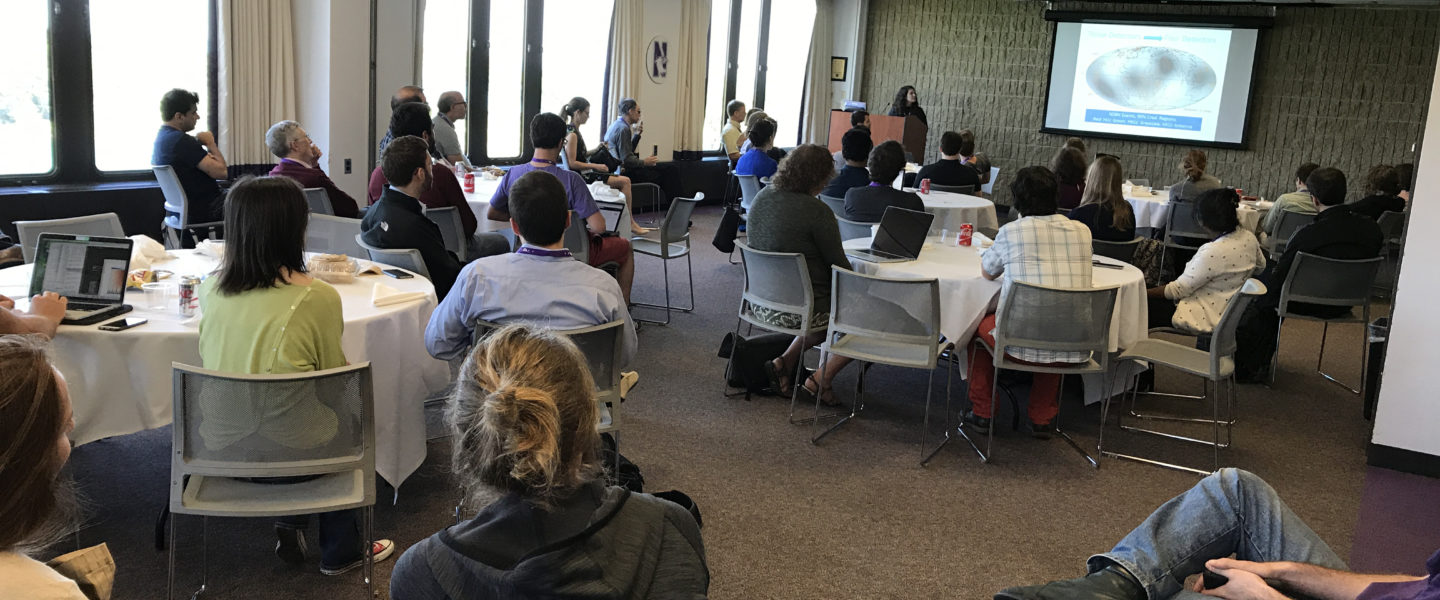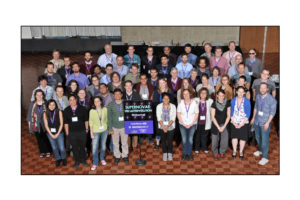 An international group of over 60 experts and young researchers working on all types of supernovae gathered May 31 – June 2 for Supernovae: The LSST Revolution, a workshop hosted by CIERA. Through talks and panel discussions, the group explored key issues from the Large Synoptic Survey Telescope perspective. The group plans to deliver a white paper with identified challenges and recommendations. Key topics included supernova light curves, LSST cadence, classification (machine learning algorithms), progenitor modeling, precovery, and LSST metrics.
An international group of over 60 experts and young researchers working on all types of supernovae gathered May 31 – June 2 for Supernovae: The LSST Revolution, a workshop hosted by CIERA. Through talks and panel discussions, the group explored key issues from the Large Synoptic Survey Telescope perspective. The group plans to deliver a white paper with identified challenges and recommendations. Key topics included supernova light curves, LSST cadence, classification (machine learning algorithms), progenitor modeling, precovery, and LSST metrics.
On June 1, an evening public lecture highlighted the unique role of supernovae in understanding the evolution of the Universe. Harvard Professor Edo Berger presented “Nature’s Biggest Explosions: Past, Present, and Future” (left). Berger discussed how our understanding ofsupernovae has improved over time, from the first observations before telescopes, to today’s observations that span over a wide range of observablewavelengths; he also discussed how supernovae themselves work, and evolve over time.
On June 2, a dozen participating graduate students from myriad institutions gave brief talks on their current work with supernovae.
Please view the scientific program online to find talk titles, abstracts, and slides.
| Scientific Organizing Committee |
Local Organizing Committee Northwestern University |
Event Support |
| Vicky Kalogera CIERA, Northwestern Ashish Mahabal Caltech Raffaella Margutti CIERA, Northwestern Michael Schmitt P&A, Northwestern Michael Wood-Vasey U Pittsburgh |
Vicky Kalogera Raffaella Margutti Gretchen Oehlschlager Michael Schmitt |
Peter Anglada Katie Breivik Eve Chase John Everett Aprajita Hajela Isaac Mandel Gretchen Oehlschlager Lisa Raymond Niharika Sravan Melodie Swanson Mike Zevin |
Supernovae: The LSST Revolution was made possible by a grant from the Large Synoptic Survey Telescope Corporation, CIERA, and the Department of Physics & Astronomy.


